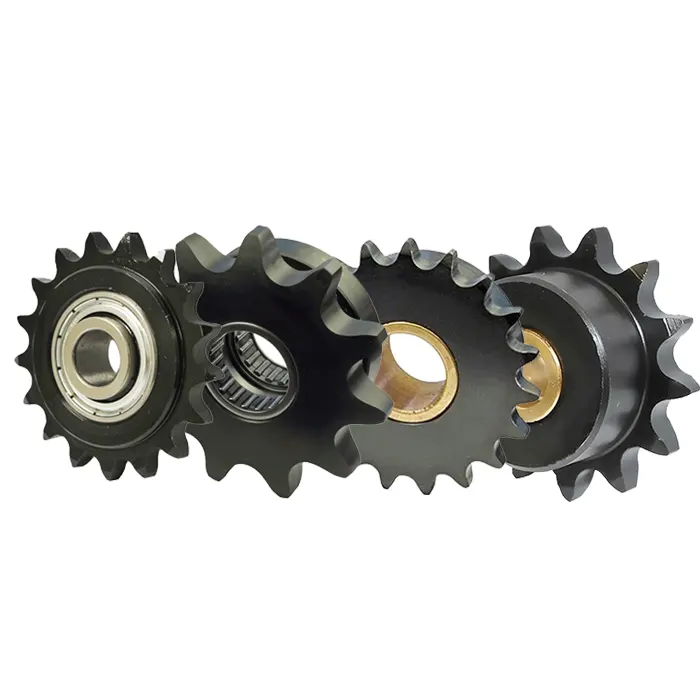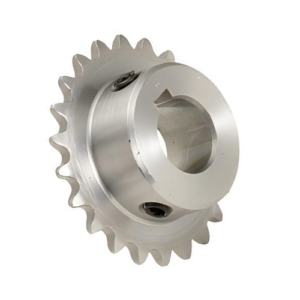#41 Chain Idler Sprocket
The #41 Chain Idler Sprocket is a crucial component in roller chain systems, designed to guide and support the chain while minimizing wear and ensuring smooth operation. It helps maintain proper tension and alignment of the chain, enhancing overall efficiency and extending the lifespan of the machinery it is used in.
Specifications of #41 Chain Idler Sprocket
Needle Bearing Idler Sprocket

| Sprocket Size | Number Of Teeth | Bearing Type | Chain Size | Outside Diameter | Bore Size | Length Thru Bore | Dimension (T) | Hub Diameter | Weight |
| 41NB19H | 19 | Needle Bearing | #41 | 3.29" | 1.00" | 1.00" | 0.227" | 2.50" | 1.00 LBS |
Bronze Bearing Idler Sprocket
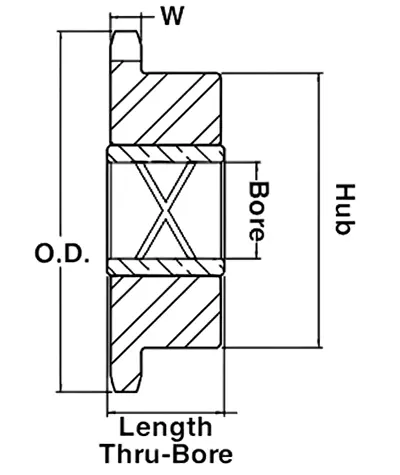
| Sprocket Size | Number Of Teeth | Bearing Type | Chain Size | Outside Diameter | Bore Size | Length Thru Bore | Dimension (T) | Hub Diameter | Weight |
| 41BR13 | 13 | Bronze Bearing | #41 | 2.33" | 1/2" | 0.94" | 0.227" | 1.56" | 0.50 LBS |
| 41BR19 | 19 | Bronze Bearing | #41 | 3.29" | 7/8" | 1.06" | 0.227" | 2.50" | 1.00 LBS |
Bronze Bushed Idler Sprocket
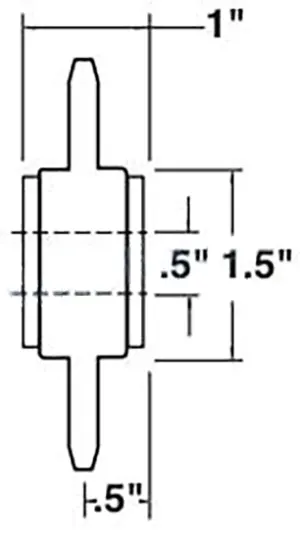
| Sprocket Size | Number Of Teeth | Chain Size | Outside Diameter | Bore Size | Weight |
| 41E15 | 15 | #41 - #40 | 2.65" | 1/2" | 0.50 LBS |
Application Scenarios of #41 Chain Idler Sprocket
The #41 Chain Idler Sprocket is versatile and essential in various applications, including:
- Conveyor Systems: Used to guide and tension chains, ensuring smooth operation and preventing slippage.
- Agricultural Machinery: Essential in equipment like harvesters and tillers to maintain effective power transfer.
- Automated Production Lines: Facilitates the movement of items, enhancing efficiency in manufacturing processes.
- Material Handling Equipment: Utilized in forklifts and pallet jacks to support chain-driven operations.
These applications highlight its critical role in enhancing performance and reliability across diverse machinery.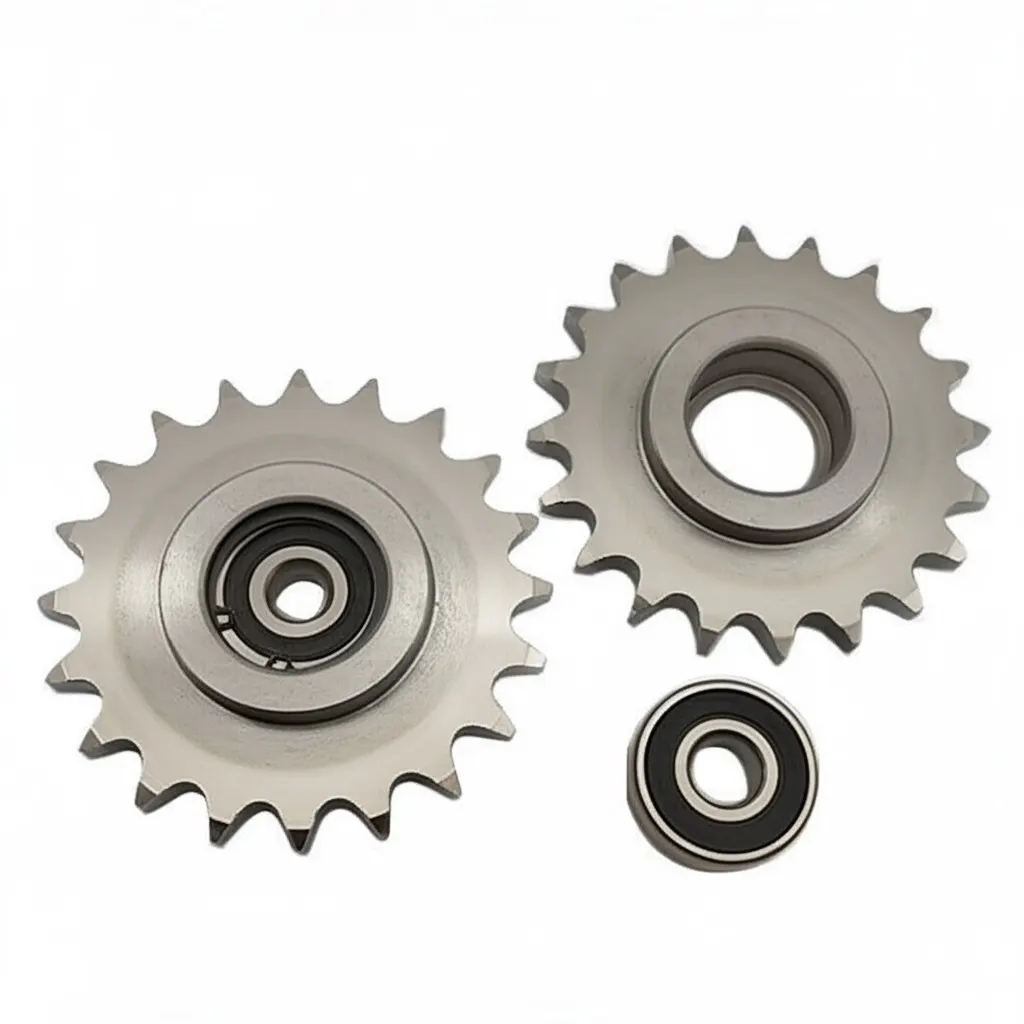
Comparison of Different Idler Sprocket Types
The #41 Chain Idler Sprocket is available with various bearing types, each offering unique advantages. Ball bearings provide smooth rotation and are ideal for high-speed applications. Needle bearings, on the other hand, are designed to handle heavy loads with minimal friction, making them suitable for demanding environments. Bronze bearings offer excellent corrosion resistance and durability, ideal for harsh conditions. Understanding these differences helps in selecting the right idler sprocket based on the specific requirements of the application, ensuring optimal performance and longevity of the machinery.
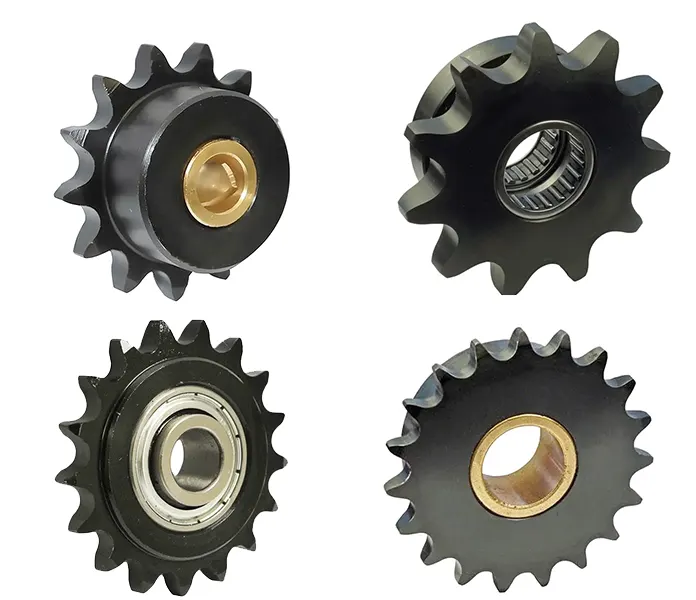
Idler Sprockets Selection
Choosing the right idler sprockets involves several key considerations:
- Determine the specific application and load requirements for your machinery.
- Check the compatibility of the #41 Chain Idler Sprocket with your existing setup.
- Evaluate the material quality for durability and wear resistance.
- Consider the size and pitch of the sprocket to ensure proper fit.
- Consult manufacturer specifications for optimal performance.
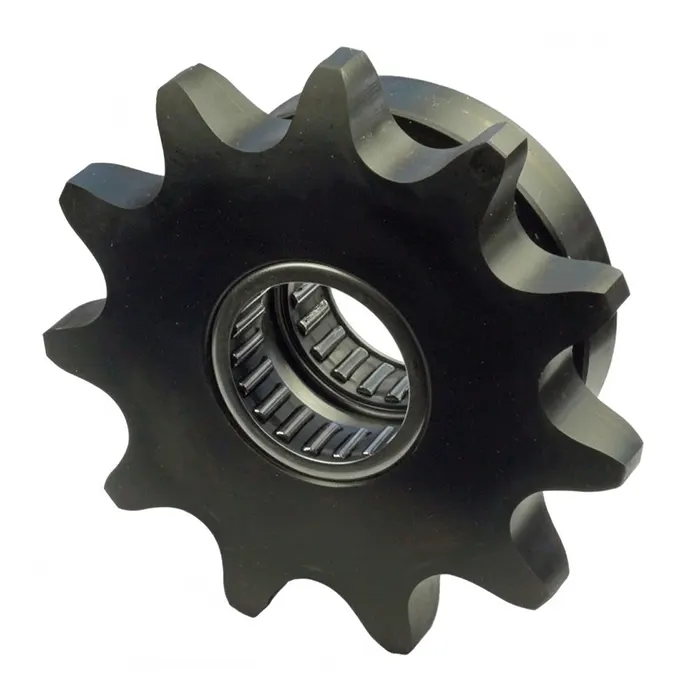
Idler Sprockets Supplier in Australia
GBC is the Australian sales agent for Ever-power Group, and we are proud to be one of the top ten gear suppliers in Australia. Our extensive range of products includes the #41 Chain Idler Sprocket, which is designed for durability and efficiency in various applications. With our commitment to quality, we ensure that our idler sprockets meet the highest industry standards, providing reliable performance for our customers.

In addition to our standard idler sprockets, we offer customized solutions tailored to meet specific customer requirements. Our team is equipped to create non-standard designs based on your unique specifications. We encourage all clients to share their drawings or samples for bespoke manufacturing, ensuring that you receive the perfect idler sprocket for your needs.
Additional information
| Edited by | Sylvia |
|---|
The #41 Chain Idler Sprocket is a crucial component in roller chain systems, designed to guide and support the chain while minimizing wear and ensuring smooth operation. It helps maintain proper tension and alignment of the chain, enhancing overall efficiency and extending the lifespan of the machinery it is used in.

